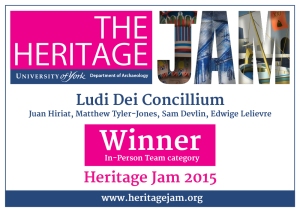My external examiner at my viva was Daniella Petrelli, an academic in the field of HCI (Human Computer Interfaces) who I had referenced a few time in my thesis particularly after discovering she was behind a platform to help curators to write the sort of content I had created for Chawton. I found that work too late, after completing the Chawton experiment. Among the “modest” changes that Daniella recommended in my viva is a considerable amount of further reading, including this paper, which to my shame I had not discovered in my literature search, and which would have saved me doing a whole lot of reading and improved my PhD! (Which is of course what a viva is for 🙂)
The paper (ARDISSONO, L., KUFIK, T. & PETRELLI, D.. 2012. Personalization in cultural heritage: the road travelled and the one ahead. User Modeling and UserAdapted Interaction 73 – 99.) Is an incredible useful survey and summary of personalisation techniques employed in cultural heritage up to 2012. I am pretty sure it came out of somebody else’s own PhD literature search. It is very biased of course towards computer enabled personalisation (because it comes out of that discipline) but it looks at 37 separate projects and charts a history of personalisation since the early 90’s. ” when some of the adaptive hypermedia systems looked at museum content (AlFresco (Stock et al., 1993), ILEX (Oberlander et al., 1998)) and tourism (AVANTI (Fink et al., 1998)) as possible application domains” (p7) These early experiments included “a human-machine dialogue on Italian art and combined natural language processing with a hypermedia system connected to a videodisc”, and “automatically generated hypertext pages with text and images taken from material harvested from existing catalogues and transcriptions of conversations with the curator”.
The authors chart the development of web–based interfaces that don’t rely on kiosks or laserdiscs, though WAP (Wireless Application Protocol – which delivered a very basic web service to “dumb” mobile phones) to multi-platform technologies that worked on computers and Personal Digital Assistants. They note two parallel streams of research – “Hypermedia and Virtual Reality threads” adapting the content to the user, and presenting overlays on maps etc. The appearance of PDA’s so personalisation becoming more content aware, with plug in GPS units, but the difficulty of tracking people indoors led to experiments in motion sensing, Petrelli herself was involved in Hyperaudio, wherein “standing for a long time in front of an exhibit indicated interest while leaving before the audio presentation was over was considered as displaying the opposite attitude” (I might need to dig that 2005 paper out, and 1999 paper on HIPS).
There is also an excellent section on the methodologies used for representing information, modelling the user, and matching users and content. When it talks about information for example, it suggests different Hypermedia methodologies, including:
- “A simple list of objects representing the exhibition as “visit paths” (Kubadji (Bohnert et al., 2008));
- Text descriptions and “bag of words” representations of the exhibits on display9 (Kubadji and PIL);
- “Bag of concepts” representations generated by natural language processing techniques to support a concept-based item classification (CHAT (de Gemmis et al., 2008)); and
- Collection-specific ontologies for the multi-classification of artworks, such as location and culture, and multi-faceted search (Delphi toolkit (Schmitz and Black, 2008))”
The paper also articulates the challenges to heritage institutions wanting to personalise their user experience, including a plethora of technologies and not standards yet reaching critical mass. Tracking users outside (before and after) their heritage experience is another challenge – membership organisations like the National Trust have a distinct advantage in this regard, but have spend most of the decade since this paper was written getting there. Of course heritage visits are made as part fo a group, more than by individuals, and personalisation by definition is about individuals – yet in most of the projects in this survey, the social aspect was not considered. The paper also acknowledges that most of these projects have involved screen based hypermedia while augmented reality and and physical interaction technologies have developed alongside.
Evaluation is a challenge too. In a section on evaluation which I only wish I had read before my project, the paper foreshadows the all the difficulties I encountered. But also says “a good personalization should go unnoticed by the user who becomes aware of it only when something goes wrong.” (p 25) It is reassuring too that the paper concludes “the real issue is to support realistic scenarios – real visitors and users, as individuals and groups in daily interactions with cultural heritage. It is time to collaborate more closely with cultural heritage researchers and institutions” (p27) which is (kind of) what I did. I had better quote that in my corrections and make it look as though I was inspired by this paper all along 🙂.







